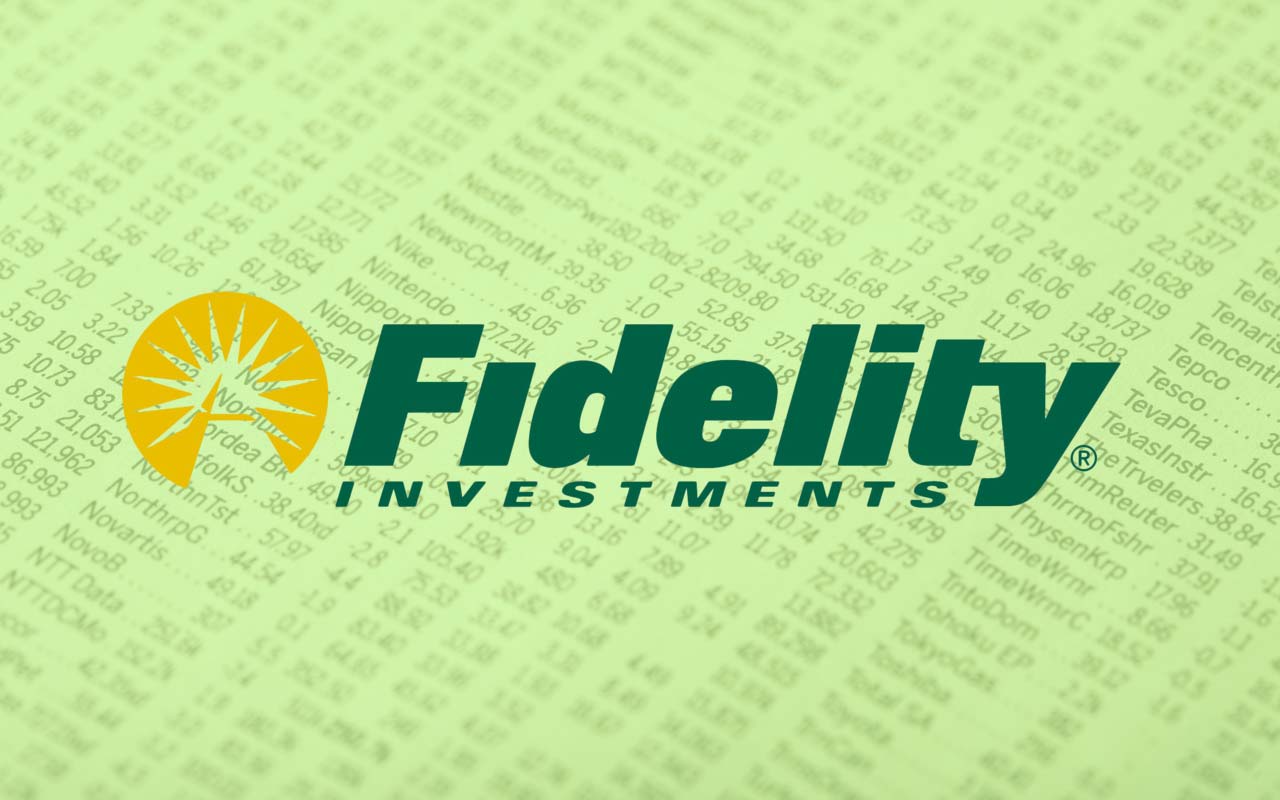7 Best Fidelity Index Funds for the Money
Vanguard isn’t the only place to get a good deal on index funds.


Vanguard isn’t the only place to get a good deal on index funds. Fidelity also offers a full roster of funds that merely try to match a benchmark. The surprise: Some Fidelity funds are downright cheap, with annual fees that are as low as — or lower than — comparable funds from Vanguard.
It’s all part of Fidelity’s plan to compete more vigorously with Vanguard, the big kahuna of index funds. Earlier this year, Fidelity removed the word “Spartan” from its index-fund names to simplify the lineup’s branding. They’re now simply called “Fidelity” funds. And in July, the firm cut fees on 27 of its index mutual funds and exchange-traded funds, which usually track indexes.
With two exceptions, all of the index mutual funds we highlight below are available in Investor share classes and Premium share classes. The Premium share classes charge less than the Investor funds but require higher initial minimum investments ($10,000 versus $2,500). We list the symbols for each fund’s Investor share class. If you plan to invest $10,000 or more in any given fund, go with the Premium share class funds, which typically charge 0.05% to 0.10% annually.
Disclaimer
Returns are through July 19; three- and five-year returns are annualized.

Fidelity 500 Index Fund
- Symbol: FUSEXOne-year return: 3.9%Three-year return: 10.8%Five-year return: 12.6%Expense ratio: 0.10%Top holdings: Apple, Microsoft, ExxonMobil
The name says it all. This fund, with $97 billion in assets, tracks Standard & Poor’s 500-stock index. What we found surprising is that the Fidelity fund is less expensive than the 800-pound gorilla in this category: Vanguard 500 Index (VFINX), which holds $240 billion and charges 0.16% in annual fees (and requires a $3,000 minimum investment).

Fidelity Extended Market Index Fund
- Symbol: FSEMXOne-year return: -3.1%Three-year return: 7.3%Five-year return: 10.0%Expense ratio: 0.10%Top holdings: Charter Communications, Tesla Motors, Liberty Global
- SEE ALSO: Great Stocks to Buy While They Are Cheap
Buy shares in this fund in combination with the 500 Index fund and you’ll own the entire U.S. market. And you won’t have to worry about duplicating holdings. Extended Market holds stock in nearly all U.S. companies — except those in the S&P 500. Stocks of some 3,200 small and midsize companies fill the fund. The extra exposure to smaller-company stocks, which tend to outperform their larger brethren over the long haul, can be a boost. Over the past 10 years, for instance, Extended Market Index returned 8.3% annualized, beating the return of the 500 Index by an average of 0.6 percentage point per year.

Fidelity Total Market Index Fund
- Symbol: FSTMXOne-year return: 2.5%Three-year return: 10.1%Five-year return: 12.1%Expense ratio: 0.10%Top holdings: Apple, Microsoft, ExxonMobil
This fund tracks an index of about 3,800 publicly traded U.S. companies (stocks of some U.S. companies are excluded from the index because they are not actively traded, and the firms are often tiny). It should be considered an all-in-one core holding for exposure to the entire U.S. stock market — large, midsize and small companies. Because Total Market Index Fund weights its stocks by market value, its top three holdings are identical to those of the S&P 500 fund.

Fidelity Four-in-One Index Fund
- Symbol: FFNOXOne-year return: -0.3%Three-year return: 6.8%Five-year return: 8.5%Expense ratio: 0.11%Holdings: Fidelity 500 Index Fund, Fidelity International Index Fund, Fidelity US Bond Index Fund, Fidelity Extended Market Index Fund
- SEE ALSO: 25 Great No-Load Mutual Funds
As the name implies, this fund, which has been around since 1999, holds four Fidelity index funds: 500 Index, Extended Market Index, International Index and US Bond Index. The fund keeps 85% of its assets in the stock funds and the rest in the bond fund. About one-third of the fund’s allocation to stocks is in the foreign-stock index fund. In eight of the 10 calendar years from 2006 through 2015, Four-in-One Index outpaced its typical peer, so-called allocation funds that invest 75% to 85% of their assets in stocks. Four-in-One’s 0.11% expense ratio includes the fees of the underlying funds.

Fidelity Nasdaq Composite Index Fund
- Symbol: FNCMXOne-year return: -2.1%Three-year return: 13.2%Five-year return: 13.5%Expense ratio: 0.29%Top holdings: Apple, Microsoft, Amazon.com
Nearly half of this fund’s assets are in technology-related stocks. That bumps up the volatility: Over the past 10 years, Nasdaq Composite Index has been 7% more volatile than the average large-company growth fund, the category to which Morningstar assigns it. So although Nasdaq Composite Index holds a smattering of consumer-oriented, health care and financial firms, the fund is best suited to investors looking to boost their exposure to tech stocks.
With annual fees of 0.29%, the fund is costlier than some of the other funds on this list. But the typical large-company index fund costs 0.65%, and the average technology index fund charges 0.66%, which makes this fund a bargain. (The fund’s exchange-traded version, Fidelity Nasdaq Composite Index Tracking Stock (ONEQ), charges just 0.21% in annual fees.)

Fidelity Emerging Markets Index Fund
- Symbol: FPEMXOne-year return: -7.1%Three-year return: -0.6%Five-year return: N/AExpense ratio: 0.31%Top three countries: China, South Korea, TaiwanWith just a $2,500 minimum investment requirement, this is one of the cheapest emerging-markets stock index mutual funds you can buy. Developing markets performed miserably from 2013 through 2015, but they have perked up this year. Year-to-date, the Fidelity fund returned 11.7%, which beats its benchmark as well as the typical diversified emerging-markets stock fund.
- SEE ALSO: 8 Foreign Stocks Paying Big Dividends
Fidelity Emerging Markets recently switched benchmarks. Before that, the fund didn’t hold any South Korean stocks because it tracked an FTSE index that considers the country to be developed. In May, Fidelity began to track the MSCI Emerging Markets index, which deems South Korea a developing country. As a result, 15% of the fund’s assets are now invested in South Korean companies.

Fidelity Real Estate Index Fund
- Symbol: FRXIXOne-year return: 19.4%Three-year return: 12.3%Five-year return: N/AExpense ratio: 0.23%Top three holdings: Simon Property Group REIT, Public Storage, Equity Residential REIT
- SEE ALSO: Best Vanguard Funds for Retirement Income
Looking for a low-cost real estate index fund? There are only two mutual fund options: Fidelity Real Estate Index Fund and the enormous Vanguard REIT Index Fund. Fidelity’s offering, which tracks the Dow Jones U.S. Select Real Estate Securities index, is cheaper by 0.03 percentage point. Since it launched in September 2011, the fund has returned an annualized 14.1%, which beats the typical real estate fund by an average of 0.6 percentage point per year.
Fidelity also has an exchange-traded real estate fund, Fidelity MSCI Real Estate ETF (FREL), which tracks an index maintained by MSCI. (Fidelity also offers ETFs that track 10 other MSCI sector indexes, including health care, technology and financials.)
Get Kiplinger Today newsletter — free
Profit and prosper with the best of Kiplinger's advice on investing, taxes, retirement, personal finance and much more. Delivered daily. Enter your email in the box and click Sign Me Up.

Nellie joined Kiplinger in August 2011 after a seven-year stint in Hong Kong. There, she worked for the Wall Street Journal Asia, where as lifestyle editor, she launched and edited Scene Asia, an online guide to food, wine, entertainment and the arts in Asia. Prior to that, she was an editor at Weekend Journal, the Friday lifestyle section of the Wall Street Journal Asia. Kiplinger isn't Nellie's first foray into personal finance: She has also worked at SmartMoney (rising from fact-checker to senior writer), and she was a senior editor at Money.
-
 Is the Economy at Risk of a Recession Because of Tariffs? What the Experts Are Saying
Is the Economy at Risk of a Recession Because of Tariffs? What the Experts Are SayingWith the stock markets up and down and tariffs on and off everyone including retirees may wonder what it means for the economy. Here's what the experts think.
By Donna Fuscaldo Published
-
 Stock Market Today: Tariff Pause Triggers 3,000-Point Dow Rally
Stock Market Today: Tariff Pause Triggers 3,000-Point Dow RallyThe bond market is sending concerning signals as the Trump administration executes its rapid reordering of global trade relationships.
By David Dittman Published
-
 Stock Market Today: Tariff Pause Triggers 3,000-Point Dow Rally
Stock Market Today: Tariff Pause Triggers 3,000-Point Dow RallyThe bond market is sending concerning signals as the Trump administration executes its rapid reordering of global trade relationships.
By David Dittman Published
-
 Stock Market Today: Tariff Talks Drive Another Up-and-Down Day
Stock Market Today: Tariff Talks Drive Another Up-and-Down DayTrade war negotiations are happening, but the "fear gauge" is gyrating, and investors, traders and speculators are still searching for signs of a bottom.
By David Dittman Published
-
 Stock Market Today: Trump Pushes Dow Into 2,600-Point Swing
Stock Market Today: Trump Pushes Dow Into 2,600-Point SwingTariffs and trade war weigh on prices across global financial markets, with little light at the end of the tunnel.
By David Dittman Published
-
 Stock Market Today: Dow Drops Another 2,231 Points to Hit a Correction
Stock Market Today: Dow Drops Another 2,231 Points to Hit a CorrectionThe Nasdaq Composite, meanwhile, entered a new bear market with its latest slide.
By Karee Venema Published
-
 Stock Market Today: Dow Dives 1,679 Points on Trump Tariff Shock
Stock Market Today: Dow Dives 1,679 Points on Trump Tariff ShockU.S. stocks lost roughly $3.1 trillion in market cap on Thursday – the biggest one-day decline since the start of the COVID-19 pandemic in March 2020.
By Karee Venema Published
-
 Stock Market Today: It's the Old Up-Down Again on Liberation Day
Stock Market Today: It's the Old Up-Down Again on Liberation DayMarkets look forward to what comes with the reordering of 80-year-old global trade relationships.
By David Dittman Published
-
 Stock Market Today: Stocks Are Mixed Before Liberation Day
Stock Market Today: Stocks Are Mixed Before Liberation DayMarkets are getting into the freewheeling rhythm of a second Trump administration.
By David Dittman Published
-
 Stock Market Today: Dow Rises 854 Points From Its Intraday Low
Stock Market Today: Dow Rises 854 Points From Its Intraday LowIf there's one thing markets hate, it's uncertainty. But uncertainty is all they're getting these days.
By David Dittman Published
